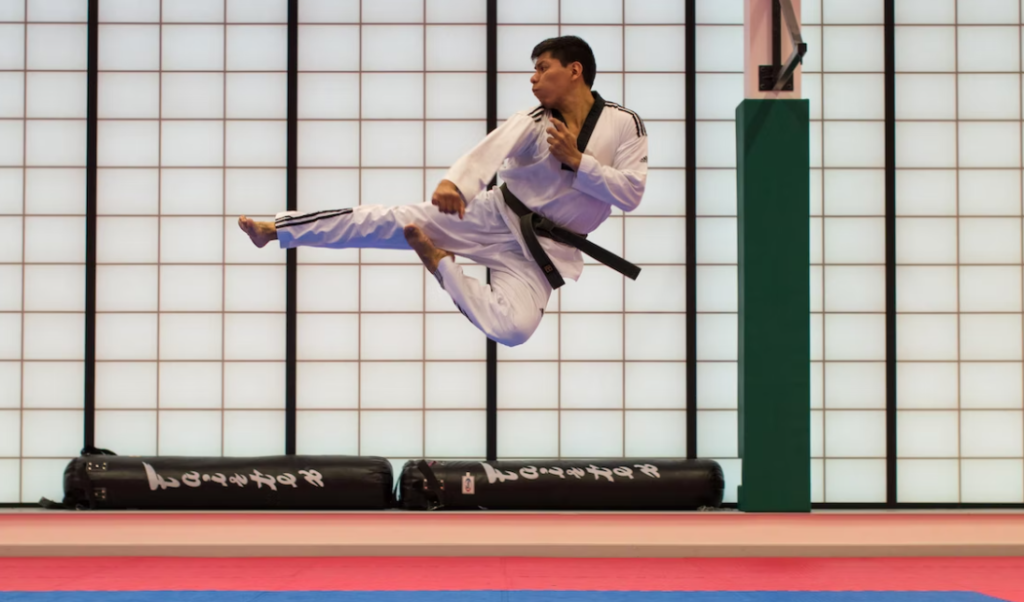Visualization and Guided Imagery
Learn about visualization and guided imagery techniques and benefits.

Selfpause Affirmation App
Download the app to get 1,000’s of affirmation meditations and everything you need to write, record and listen to your own.
The benefits and techniques of guided imagery are discussed in this article. The techniques include the use of mental pictures and a trained practitioner assists the patient in creating these images. The images are designed to simulate sensory perception. This process is often beneficial for overcoming anxiety, depression, and other problems. The technique can also help people who experience difficulty concentrating or focusing on a goal.
Benefits

Visualization and guided imagery are beneficial for your health, creativity, and performance. Research shows that just 10 minutes of imagery can lower blood pressure, reduce cholesterol and glucose levels, and improve short-term immune cell activity. It can also help you sleep better and deal with chronic pain. Whether you’re experiencing stress or anxiety, guided imagery can help.
Guided imagery works by directing your thoughts toward a specific, calming place. It can also involve your sense of sight, smell, and taste. The more precise your imagery, the more powerful it is. While you may experience anxiety while practicing guided imagery, you’ll be able to relax and achieve a feeling of serenity.
A visualization is a powerful tool for cultivating your mind’s power. Anyone can use it to improve their quality of life, reduce pain, and boost their mood. In fact, Jim Carrey, a successful actor, and director, wrote himself a check for $10 million on Thanksgiving 1995, based on his visualization. His intention was to receive money for his role in the movie Dumb and Dumber. While most people think of visualization as a picture or feeling, all forms can be beneficial.
Guided imagery can help you achieve your goals by reprogramming your mind. This technique involves visualizing a serene environment and focusing on the positive aspects of the scene. It can be self-taught or guided by a professional. It promotes deep relaxation by engaging all your senses. For example, if you’re imagining a pain-free walk, you should focus on what you hear and feel. You may also engage your tactile senses during guided imagery sessions.
Guided imagery can provide insight, wisdom, and relaxation. It can distract you from daily stressors, and create a positive mental frame of mind. It can also help you break patterns of rumination and help you develop more resilience to stress.
Techniques

Techniques for visualization and guided imagery are two techniques that work together to help you focus on the outcome of an exercise. A guided imagery technique uses a recording to guide you through a series of visualization exercises. The recordings begin with a blank canvas and add detail as the session continues. These recordings can be found on websites, YouTube, and other media. They can be played on mp3 players or downloaded to a computer. You can also download apps with different types of guided imagery exercises.
The process of guided imagery requires the participant to become relaxed and calm. A long guided imagery audio can take up to an hour and is not recommended if you are in a high-stress situation. However, a short visualization can provide you with the confidence and peace you need to complete a difficult task.
Guided imagery involves imagining a goal or relaxing environment. You can use the techniques to cope with various problems, from physical ailments to learning challenges. However, the most common use of these techniques is for relaxation purposes. The process usually involves sitting quietly and visualizing a peaceful environment. You can practice this technique on your own or with an instructor.
To make the process of guided imagery more effective, try to immerse yourself in the scene. It can be difficult at first, but as you become more skilled at it, you’ll be able to enter a relaxed state faster. The more vivid and realistic the image, the more effective the technique.
Guided imagery is a subtle form of meditation that can reduce anxiety and stress. It requires imagination, which can help people suffering from depression and post-traumatic stress disorder. It can also be useful for people undergoing therapy or recovering from surgery.
Techniques of guided imagery

Guided imagery is a type of relaxation technique wherein you focus on the image or the mental state that you want to achieve. It can be used to treat a variety of problems, such as anxiety, depression, and post-traumatic stress disorder. However, this technique may not be suitable for everyone. If you are not comfortable using this technique, you should seek the help of a professional.
To practice guided imagery, first, find a quiet place. You may sit on a chair or lie on the floor. Then, close your eyes and take a deep breath. You can also play an audio recording while practicing guided imagery. The most effective way to get the most out of this technique is to practice daily.
While conducting guided imagery, the therapist should avoid interrupting the client’s experience and should be quiet and calm. It’s helpful to repeat the words that the client has said, as hearing them repeated can help them gain insight. In addition, therapists should come back slowly and feel the sensations in the client’s body. This way, therapists will be able to work with the client on understanding what the experience meant to them.
Guided imagery is an effective tool to lower physical and emotional stress. Calming the sympathetic nervous system, it helps reduce the production of harmful stress hormones. This is a beneficial tool for stress management, as stress can lead to heightened heart rate, blood pressure, and even depression. As an added benefit, it can also reduce the pain and discomfort associated with chronic conditions. The practice can also help reduce the need for pain medications and improve mobility.
Guided imagery has been harnessed in many ways for centuries, including therapy. In some cases, it can help manage pain after orthopedic surgery. In one study, children who practiced guided imagery experienced less pain after their surgery. In another study, people who used guided imagery alongside progressive muscle relaxation were able to reduce the pain after surgery.
Effects on behavior change

Mental imagery is an important tool for behavioral change. It can be self-directed or guided by a therapist. It is based on the idea that the mind can be trained to create positive images. The more specific the imagery, the more effective it is. This practice is effective for a variety of purposes, including stress relief and relaxation.
Guided imagery is practiced individually, with a group, or with a practitioner. Practitioners often provide instructions to clients and use a script or guide to guide them through the process. A typical guided imagery session may include relaxation exercises and a visual image offered through cues. Some clients may have difficulty visualizing, so a practitioner can help them develop a positive image that can be repeated over time.
Guided imagery has a long history in medicine. It is used to treat a variety of ailments, from post-traumatic stress to depression. It can even be used to treat inflammatory conditions. In one recent study, patients assigned to guided imagery showed significant reductions in their symptoms.
Guided imagery is also used to help people deal with chronic stress. Chronic stress is detrimental to both the body and the mind. Studies of guided imagery showed a significant reduction in short and long-term stress levels. It is also effective for treating chronic health conditions, such as anxiety or chronic pain. It has been shown to decrease cortisol levels in saliva. Similarly, guided imagery may decrease the need for medication for pain control.
Guided imagery can help individuals overcome physical ailments by training their minds to visualize the results of various physical activities. It also increases motivation for physical activity. Moreover, it enhances the enjoyment of physical activity. This is because guided imagery targets the dual-system reward system.
Impact on self-regulation
Guided imagery, or visualizing scenarios in the mind, can help people learn how to regulate their own feelings and behaviors. It can also be useful for managing stress. Moreover, it can improve brainstorming, improve self-esteem, and help individuals explore new career options. Several studies have shown that guided imagery can enhance self-management skills.
Guided imagery uses the power of imagination to create positive images in the mind. It is based on the belief that the mind can manipulate and alter the body, causing it to produce healthy changes in the body. By focusing on positive images, guided imagery can help individuals regulate their negative thoughts and feelings. Usually, guided imagery exercises begin with a relaxation exercise. A therapist may provide this exercise in person, but it can also be done by listening to a recording.
Guided imagery has been shown to reduce physical and emotional stress. Reducing the production of stress hormones, it reduces the level of physical reactions to stress. Chronic stress can lead to high blood pressure, exhaustion, and depression. It can even improve the quality of life of people suffering from chronic health problems. Moreover, it can improve mobility and reduce the need for pain medications.
Our Top FAQ's
Visualization and guided imagery are forms of meditation or relaxation techniques that involve using the imagination to create mental images or scenes. These techniques often involve focusing on a specific image or scenario, and using the senses (such as sight, sound, and touch) to engage with the image in a way that promotes relaxation or helps achieve a desired goal. Visualization and guided imagery differ from other types of meditation or relaxation techniques in that they specifically involve the use of mental imagery and the senses, rather than focusing on the breath or a mantra, for example.
Some potential benefits of using visualization and guided imagery for stress management or personal growth include: reducing anxiety and stress, improving mood and overall well-being, and helping to achieve specific goals or outcomes. Visualization and guided imagery may also be used to improve physical health, such as by reducing pain or helping with the healing process.
To begin using visualization and guided imagery as a practice, you can start by finding a quiet, comfortable place to sit or lie down. Close your eyes and focus on your breath for a few minutes to help calm your mind. Then, imagine a peaceful scene or place in your mind, using as many of your senses as possible to engage with the image. You can also try using guided imagery scripts or recordings to help guide you through the visualization process.
There are generally few risks or drawbacks to using visualization and guided imagery as a relaxation or stress management technique. However, it is important to note that visualization and guided imagery should not be used as a substitute for seeking medical or mental health treatment if needed. Additionally, visualization and guided imagery may not be suitable for everyone, and it is always important to speak with a healthcare professional if you have any concerns.
Visualization and guided imagery can be used in combination with other therapies or treatments, such as cognitive-behavioral therapy or medication. In fact, many healthcare professionals use visualization and guided imagery as a complementary treatment in conjunction with other forms of therapy or treatment. It is always important to discuss any complementary or alternative treatments with your healthcare provider to ensure they are appropriate and safe for your individual needs.
